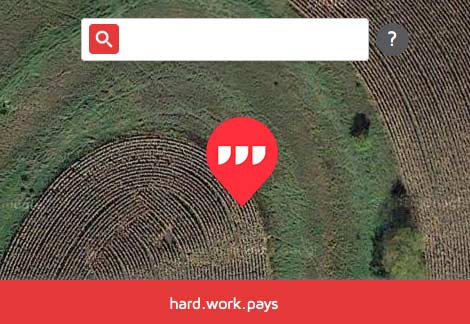 [LT] Vakar man parodė įdomų projektą-aplikaciją, kuri leidžia bet kuriam Žemės lopinėliui (3 x 3 m) priskirti adresą iš trijų (angliškų) žodžių. Taip išvengiama sudėtingų koordinačių skaičių naudojimo. Buvo įdomu koks visgi principas naudojamas šio projekto įgyvendinimui. Pirmas variantas – tai kažkoks unikalus algoritmas pagal koordinačių skaičius (ilguma ir platuma) priskiriantis atsitiktinius, bet visada tuos pačius, žodžius iš anglų kalbos žodyno. Antras variantas, kuris man į galvą atėjo tik šiandien, tai vardo suteikimas, kai dėl jo kreipiasi vartotojas ir išsaugojimas duomenų bazėje. Tokiu atveju nereikėtų labai įmantraus algoritmo ir tikriausiai niekada neprireiktų jo pritaikyti bet kokiai pasaulio vietai. Aišku, reikės didelės duomenų bazės tokio kiekio užklausų ir priskirtų žodžių saugojimui. Visgi, paskaičius projekto DUK, panašu, kad what3words pasirinko ir įgyvendino pirmą variantą. Pasak jų, visa aplikacija tesveria 12 MB (vis tiek nuostabu, kad pavyko į tokį dydį įkišti nemažą žodynėlį). Nors tame pačiame DUK kūrėjai mini, kad parduoda prieigą prie aplikacijos (API) didelėms bendrovėms, visgi praktinė nauda neatrodo tokia didelė, kai visos žemėlapių programėlės turi paprastas galimybes pasidalint vietove (share). Bet reikia pripažint, kad pasiūlymas draugams susitikti candy.magnum.fact taške (viena iš Katedros aikštės vietų) skamba kietai 🙂
[LT] Vakar man parodė įdomų projektą-aplikaciją, kuri leidžia bet kuriam Žemės lopinėliui (3 x 3 m) priskirti adresą iš trijų (angliškų) žodžių. Taip išvengiama sudėtingų koordinačių skaičių naudojimo. Buvo įdomu koks visgi principas naudojamas šio projekto įgyvendinimui. Pirmas variantas – tai kažkoks unikalus algoritmas pagal koordinačių skaičius (ilguma ir platuma) priskiriantis atsitiktinius, bet visada tuos pačius, žodžius iš anglų kalbos žodyno. Antras variantas, kuris man į galvą atėjo tik šiandien, tai vardo suteikimas, kai dėl jo kreipiasi vartotojas ir išsaugojimas duomenų bazėje. Tokiu atveju nereikėtų labai įmantraus algoritmo ir tikriausiai niekada neprireiktų jo pritaikyti bet kokiai pasaulio vietai. Aišku, reikės didelės duomenų bazės tokio kiekio užklausų ir priskirtų žodžių saugojimui. Visgi, paskaičius projekto DUK, panašu, kad what3words pasirinko ir įgyvendino pirmą variantą. Pasak jų, visa aplikacija tesveria 12 MB (vis tiek nuostabu, kad pavyko į tokį dydį įkišti nemažą žodynėlį). Nors tame pačiame DUK kūrėjai mini, kad parduoda prieigą prie aplikacijos (API) didelėms bendrovėms, visgi praktinė nauda neatrodo tokia didelė, kai visos žemėlapių programėlės turi paprastas galimybes pasidalint vietove (share). Bet reikia pripažint, kad pasiūlymas draugams susitikti candy.magnum.fact taške (viena iš Katedros aikštės vietų) skamba kietai 🙂
[EN] Yesterday an interesting project-application has been shown to me, which allows to assign a 3 (english) words combination to any (3 x3 m) patch of the Earth. This is a way to avoid usage of complex coordinates numbers. I was curious how exactly this was implemented. First variant – some unique algorithm assigning random, but always same, words from an English dictionary to a set of coordinates numbers (longitude, latitude). Another approach, which cam to my mind today, would be to only apply a three words name when someone requests it for a particular location and save it into database. This way you won’t need a very sophisticated algorithm and there won’t be a need to apply it to any place in the world. Of course, this would require a huge database to store all the saved locations and assigned names. However, after reading project’s FAQ it seem that what3words have implemented the first variant. In their words, whole application only takes 12 MB (still impressive, that they managed to fit pretty big dictionary into such size). Although in the same FAQ developers mention that they sell API access to big companies, this is still doubtful that there is a sufficient practical usage of it, when every map application has an easy way to share the location. But i have to admit, that a proposition to your friends to meat in candy.magnum.fact point (one of the Katedros square spots) sounds cool 🙂
 [LT] Kaip jau rašiau anksčiau, ši Carcassonne versija manęs nesužavėjo, bet bežaisdamas mintyse mačiau šį vaizdą, kurį ir užfiksavau – meepložmogis ilsisi prie jūros 🙂
[LT] Kaip jau rašiau anksčiau, ši Carcassonne versija manęs nesužavėjo, bet bežaisdamas mintyse mačiau šį vaizdą, kurį ir užfiksavau – meepložmogis ilsisi prie jūros 🙂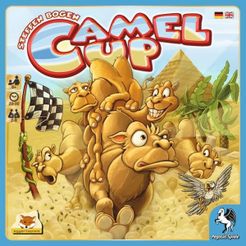
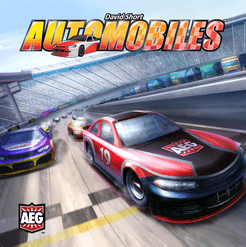
 [LT]
[LT] 
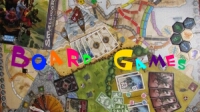
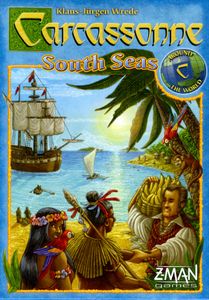
 [LT] Vakar man parodė įdomų projektą-aplikaciją, kuri leidžia bet kuriam Žemės lopinėliui (3 x 3 m) priskirti adresą iš trijų (angliškų) žodžių. Taip išvengiama sudėtingų koordinačių skaičių naudojimo. Buvo įdomu koks visgi principas naudojamas šio projekto įgyvendinimui. Pirmas variantas – tai kažkoks unikalus algoritmas pagal koordinačių skaičius (ilguma ir platuma) priskiriantis atsitiktinius, bet visada tuos pačius, žodžius iš anglų kalbos žodyno. Antras variantas, kuris man į galvą atėjo tik šiandien, tai vardo suteikimas, kai dėl jo kreipiasi vartotojas ir išsaugojimas duomenų bazėje. Tokiu atveju nereikėtų labai įmantraus algoritmo ir tikriausiai niekada neprireiktų jo pritaikyti bet kokiai pasaulio vietai. Aišku, reikės didelės duomenų bazės tokio kiekio užklausų ir priskirtų žodžių saugojimui. Visgi, paskaičius projekto DUK, panašu, kad
[LT] Vakar man parodė įdomų projektą-aplikaciją, kuri leidžia bet kuriam Žemės lopinėliui (3 x 3 m) priskirti adresą iš trijų (angliškų) žodžių. Taip išvengiama sudėtingų koordinačių skaičių naudojimo. Buvo įdomu koks visgi principas naudojamas šio projekto įgyvendinimui. Pirmas variantas – tai kažkoks unikalus algoritmas pagal koordinačių skaičius (ilguma ir platuma) priskiriantis atsitiktinius, bet visada tuos pačius, žodžius iš anglų kalbos žodyno. Antras variantas, kuris man į galvą atėjo tik šiandien, tai vardo suteikimas, kai dėl jo kreipiasi vartotojas ir išsaugojimas duomenų bazėje. Tokiu atveju nereikėtų labai įmantraus algoritmo ir tikriausiai niekada neprireiktų jo pritaikyti bet kokiai pasaulio vietai. Aišku, reikės didelės duomenų bazės tokio kiekio užklausų ir priskirtų žodžių saugojimui. Visgi, paskaičius projekto DUK, panašu, kad  [LT] Šiandien perskaičiau, kad Microsoft padarys
[LT] Šiandien perskaičiau, kad Microsoft padarys